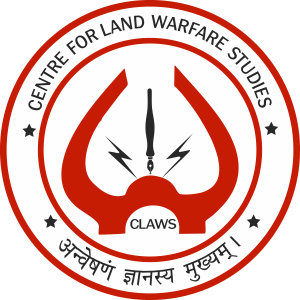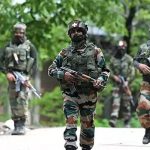Abstract
The Arakan Army (AA), a Rakhine-based ethnic group in western Myanmar, has emerged as a potent armed actor in Southeast Asia’s shifting security landscape. While originally focused on asserting ethnic autonomy within Myanmar, its growing military capacity and strategic alliances have expanded its influence beyond the national borders— it has emerged as a formidable actor in the country’s protracted civil conflict. Its evolving objectives, transnational linkages and growing operational capabilities have significant implications for India’s internal security, border management and regional diplomacy.
For India, particularly its Northeast region, the AA’s rise presents complex challenges- ranging from cross-border insurgency, arms trafficking and refugee inflow to the destabilisation of vital infrastructure projects. This web article critically examines the AA’s evolution, its operational linkages with Indian insurgent groups and the broader geopolitical implications for India’s regional and strategic ambitions. It offers policy recommendations in light of the changing power dynamics along its eastern frontier. Based on recent field reports, academic research and open-source intelligence, this study argues for a recalibrated Indian response that blends tactical foresight with long-term diplomatic engagement.
Introduction
India and Myanmar share a 1,643-kilometre-long land border that traverses four Indian states: Arunachal Pradesh, Nagaland, Manipur and Mizoram. In recent years, the instability in Myanmar has had direct implications for India’s northeastern region. Among the myriad of ethnic armed groups operating in Myanmar, the Arakan Army (AA) has emerged as one of the most potent insurgent organisation. Its rise not only poses a threat to Myanmar’s territorial integrity but also influences India’s strategic calculus in the region. The assumption of governance by Myanmar’s State Administrative Council (SAC) on 01 February 2021 has significantly altered the country’s political landscape. The ensuing instability has resulted in the loss of numerous lives and displacement of thousands, many of whom have sought refuge in neighbouring countries. Hence, this evolving situation has given rise to a complex geopolitical challenge, not only for Myanmar but for the broader Southeast Asian region.
Origins and Evolution of the Arakan Army
Formed in 2009 as the armed wing of the United League of Arakan (ULA), the Arakan Army initially operated from the Kachin Independence Army’s (KIA) bases in northern Myanmar. It later expanded its area of influence to western Myanmar especially the Rakhine State. The group claims to fight for greater autonomy and ethnic self-determination for the Rakhine people. Over time, the AA has grown in strength, both in terms of numbers and operational capability, adopting hybrid guerrilla warfare tactics and leveraging sophisticated arms networks.
Following the 2021 military takeover of governance in Myanmar, the AA capitalised on the breakdown of central authority to entrench itself in Rakhine. It now controls most of the townships and has established parallel administrative mechanisms, including tax collection and judiciary functions.
Regional Linkages and Indian Insurgent Groups
The AA’s connections with Indian insurgent groups such as the United Liberation Front of Asom – Independent (ULFA-I) and the National Socialist Council of Nagaland – Khaplang (NSCN-K) raises red flags for Indian security planners. Intelligence sources referred to by Lintner, indicate that the AA has facilitated arms smuggling and safe passage for Indian insurgents through its controlled territories in western Myanmar.
Moreover, the porous Indo-Myanmar border and the Free Movement Regime (FMR), while culturally and economically valuable, have also enabled greater insurgent mobility. Such linkages could fuel renewed instability in India’s Northeast—a region already coping with ethnic tensions, refugee inflows, and drug trafficking.
Strategic Implications for India Border Security
The AA’s expanding influence has made it more challenging for the Myanmar military (Tatmadaw) to cooperate with India in joint operations such as Operation Sunrise I & II. With Myanmar’s state capacity weakened during SAC governance, India must increasingly rely on unilateral border management, including fencing, technological surveillance and intelligence-driven counter-insurgency efforts.
Refugee Flows
Military offensives, involving the AA in Rakhine, have led to displacement across the Indo-Myanmar border, especially into Mizoram. The refugee influx strains local administration and creates political dilemmas for New Delhi, which must balance its strategic ties with the Myanmar SAC government and its humanitarian commitments.
Maritime and Economic Concerns
The Arakan region (present-day Rakhine State) holds considerable economic and strategic significance for both India and China. Rich in natural resources and located along the Bay of Bengal, it serves as a critical maritime gateway for regional connectivity and energy security. For China, the region is pivotal for the China–Myanmar Economic Corridor (CMEC), which facilitates overland access to the Indian Ocean. For India, Arakan anchors key infrastructure projects such as the Kaladan Multi-Modal Transit Transport Project, which aims to enhance connectivity between India’s Northeast and Southeast Asia. As such, stability in Rakhine is essential for long-term economic and geopolitical interests of both nations. AA’s expanding presence in and around Sittwe and Kyaukpyu carries far-reaching implications. Instability in these strategic hubs has the potential to trigger prolonged disruptions with significant regional consequences.
Futuristic Prognosis: Emerging Scenarios and India’s Strategic Calculus
Looking ahead, the trajectory of the Arakan Army and its implications for India can be visualised across three plausible scenarios in order of probability of occurrence:
- Militarised Entanglement with Chinese Interests: As China deepens its strategic investments via the CMEC, the AA may be co-opted to protect or undermine these assets, depending on Beijing’s calculus. China’s recurring engagement and reported interactions with the AA reflect its proactive and assertive approach in navigating relationships with key ethnic armed groups, particularly the AA. For India, this could result in contested maritime zones and a higher threat to energy security in the Bay of Bengal. Thus, New Delhi must plan contingencies in diplomatic and military arenas.
- Consolidation of Autonomous Control: The AA, leveraging weakened central authority in Myanmar, may solidify its territorial hold in Rakhine and adjoining areas. This would entail the continuation of quasi-state functions, creating challenges for Indian infrastructure projects in proximity, especially the Kaladan corridor. Hence, India will need to establish informal engagement with AA representatives to secure its geopolitical interests and address humanitarian commitments.
- Fragmentation and Regional Spillover: If internal dissent or overreach destabilises the AA, the resulting power vacuum could be exploited by rival insurgents or criminal syndicates. This would pose severe challenges for Indian border management, especially in Manipur and Mizoram, and necessitate humanitarian mobilisation and cross-border security mechanisms.
- Overlapping Influence of the AA in Bangladesh: The internal dynamics in Bangladesh, compounded by the ongoing conflict in Rakhine involving the Rohingya population, raise concerns over the emergence of an unstable corridor stretching from Rakhine to Chittagong. The limited administrative reach and governance in these peripheral regions may inadvertently create vacuums, enabling local non-state actors, including armed and radicalised elements, to gain a foothold, thereby exacerbating lawlessness and undermining regional stability.
Policy Recommendations
- Enhance Border Surveillance: Deploy drones, motion sensors and satellite tracking to monitor insurgent activity along the Indo-Myanmar border. The envisaged border fence, which is likely to be constructed in the next few years, will facilitate better border management.
- Calibrated Engagement: While sustaining formal diplomatic engagement with the SAC of Myanmar, it would be prudent for India to consider exploring discreet and constructive avenues of dialogue with key Ethnic Armed Organisations (EAOs) including the AA. Such informal interactions, undertaken with due sensitivity to Myanmar’s sovereignty, could facilitate mutual understanding and foster a conducive environment for the safeguarding of critical infrastructure projects and providing humanitarian aid through strategically important connectivity corridors of the region.
- Community-Based Vigilance: Empower border communities through socio-economic programmes and localised intelligence networks to curb insurgent recruitment. Border area development and integration projects will further strengthen the hold of the centre on this remote Far East region. Ex-servicemen from the border regions represent a well-trained and disciplined pool of manpower who could be thoughtfully integrated into localised border management frameworks. Their inclusion would not only enhance security but also serve as a conduit for extending the presence and developmental initiatives of the government in these remote and strategically significant areas.
- Regional Diplomacy: India may consider proactively engaging with regional multilateral platforms such as the Association of Southeast Asian Nations (ASEAN) and the Bay of Bengal Initiative for Multi-Sectoral Technical and Economic Cooperation (BIMSTEC) to advocate for an inclusive political dialogue in Myanmar. Such efforts could underscore the intrinsic link between internal stability, regional connectivity and sustainable economic integration. Furthermore, it would be prudent for India to collaborate with like-minded nations within ASEAN and the broader East Asian region to promote a collective endeavour towards peace-building, conflict resolution, and the provision of humanitarian assistance to affected communities in Myanmar.
Conclusion This article has endeavoured to trace the operational evolution of the AA, assess its regional ethnic motivations and critically analyse the resulting implications for India within the broader and increasingly fragile Indo-Myanmar security architecture. The ascent of the AA serves as a stark indicator of Myanmar’s fragmented state apparatus and highlights the broader regional ramifications of its enduring internal unrest. For India, the implications are both immediate and far-reaching. The AA’s evolving nexus with insurgent elements in India’s Northeast, its proximity to key infrastructure projects and its capacity to unsettle regional stability collectively present a complex strategic landscape. In this context, a calibrated and multi-dimensional policy response — rooted in pragmatic security considerations and sustained regional engagement is essential for safeguarding India’s eastern frontier.














Jai hind sir,
Very well articulated and structured article on a contemporary and relevant topic.
Warm regards.
Amazingly written …lucid and clear!
Jai hind sir
Sir, a very well-researched and insightful read which captures the evolution of the Arakan Army and its wider regional impact. The analysis of linkages with Indian insurgent groups, future scenarios and pragmatic policy recommendations adds great depth and clarity to an otherwise complex subject.
Warm regards
Jay Hind.
I’m really glad to hear and read this article.
India must India first.
Very nice article about the current activities and issues of The Arakan Army and it’s impacts on India, touching every aspect.